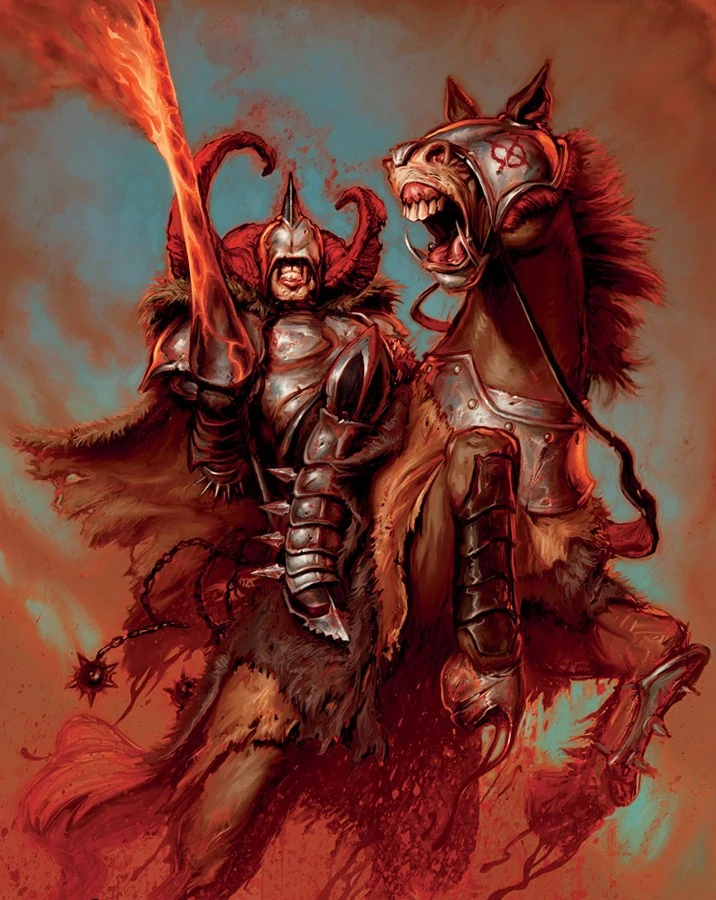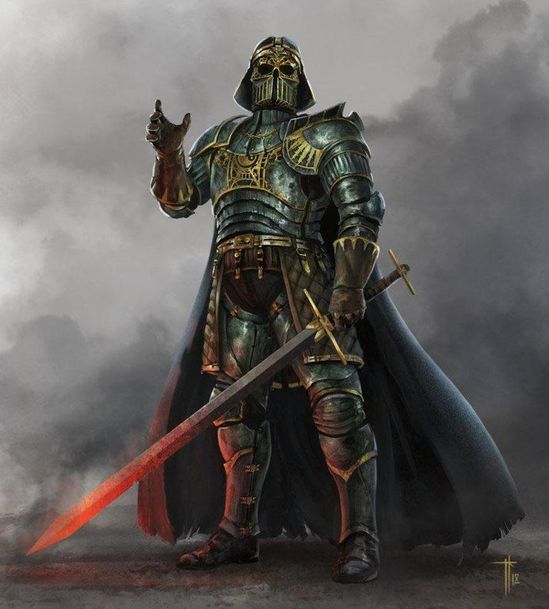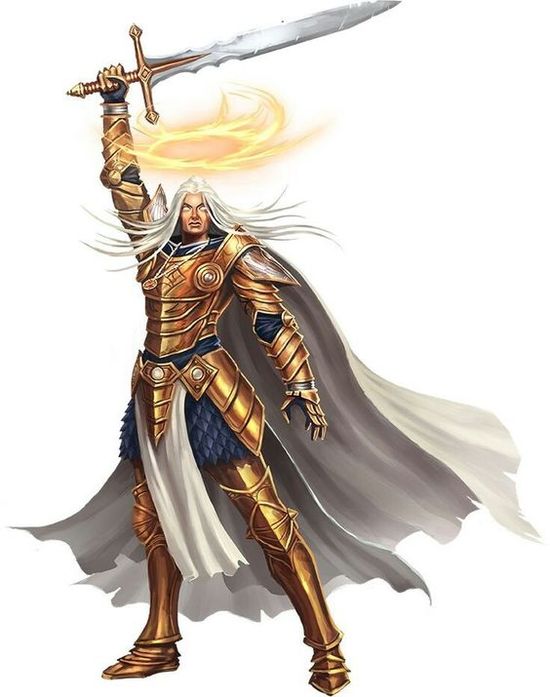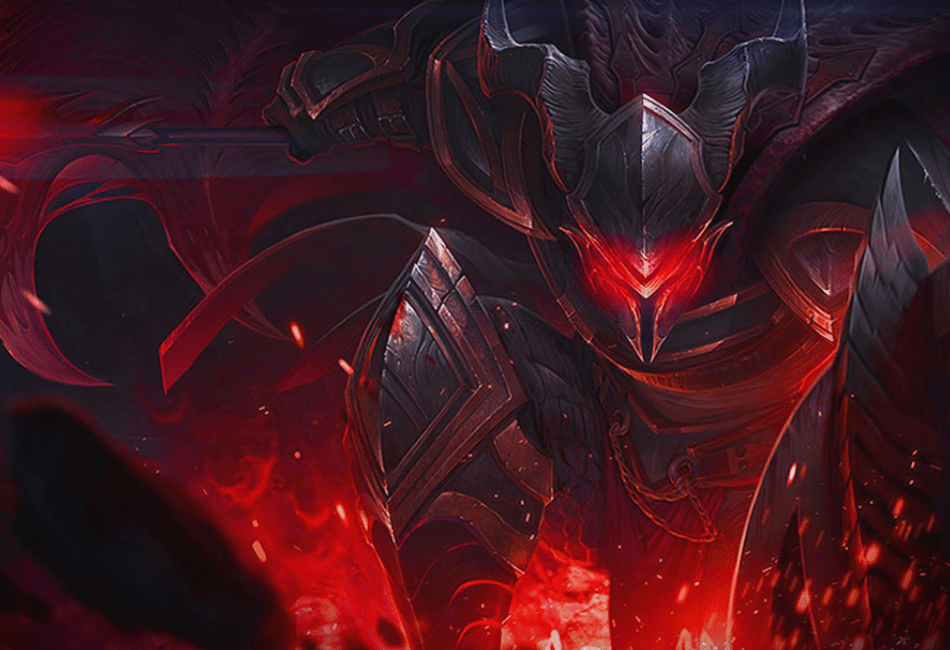D&D has gone a long way from its origins as the D&D created by Gary Gygax. What were three original classes has become thirteen, four races now dozens. With these expansions, the game has gotten more complicated. Throughout the years, they have changed the game to encapsulate more updated mechanics. Adapted the roleplaying aspects to match the progression of generations.
I cannot say that I had played every edition of D&D. (primarily due to its creation before I was born.) I can say that I have played the more recent editions and have found a great interest in the 5th edition. For over a decade, I have been playing different D&D classes and trying out a variety of subclasses.
My favorite has to be the Paladin Class. Their themes of being a leader and speaker for the party. Pair that with their natural endurance makes a compelling character to roleplay. I would not call them the most complex class. They do bring an exciting balance of utility and combat strength to the game.
So with that in mind, let’s get on with our Oath of Vengeance 5e Guide and explore one of the subclasses for Paladin: the Oath of Vengeance.
The Short Version

Paladins gain their powers from the oath they swear to their god or deity. With the Oath of Vengeance, their tenets are as such.
- Fight the Greater Evil
- No Mercy for the Wicked
- By Any Means Necessary
- Restitution
In return for their oath, they gain many powers as their will and understanding grow stronger.
| Level 2 | Channel Divinity |
| Level 3 | Oath Spells |
| Level 7 | Relentless Avenger |
| Level 15 | Soul of Vengence |
| Level 20 | Avenging Angel |
These abilities are great boons in battle. They revolve around your channel divinity: Vow of Enmity. It makes you a powerful single-target damage dealer. While making sure that you can keep that boss locked down and away from hurting your teammates.
As a Subclass, this is one of the best for single-target combat. Working as a team, you can lock down one major enemy and even defeat it. At the same time, your party members handle another significant threat.
You are still a Paladin, so you lack in ranged options. When choosing this subclass, you lock yourself away from dealing with many enemies. Something to keep in mind depending on what campaign you may be playing.
Subclass Features
Every Paladin has access to Channel Divinity. The oath they swear to determines the features they get and the Channel Divinity they have access to. Other features such as smite or divine sense, all Paladins have and will not be discussed too much here. Let us look at the ability you get first Channel Divinity.
Channel Divinity

At level 3, Vengeance Paladins gain two options for their Channel Divinity.
| Abjure Enemy | As an action, choose one creature within 60 feet of you that you can see. That creature must make a Wisdom saving throw unless it is immune to being frightened. Fiends and Undead have disadvantage on this saving throw.
On a failed save, the creature is frightened for one minute or until it takes any damage. While frightened, the creature’s speed is zero, and it can’t benefit from any bonuses to its speed. On a successful save, the creature’s speed is halved for one minute or until the creature takes any damage. . |
| Vow of Enmity | As a bonus action, target a creature within 10 feet of you. You gain advantage on attack rolls against the creature for one minute or until it drops to zero hit points or falls unconscious. |
Both of these powerful options are equally useful in your Paladin’s path. As an added note, the frightened condition has its own effects. Such as making the creature afflicted by its roll attacks at disadvantage if they can see the cause of fear.
Both effects only target one creature. So its use depends on if you want to hit that thing more accurately or try to keep it away from you and your party.
Channel Divinities can only be used once before needing a long or short rest to recharge. Try to use it for a special occasion or in the face of grave danger.
Oath Spells

When a Paladin hits a certain level, they gain spells related to the oath they swear upon. There are a lot of spells, so I will give a quick summary of what each spell does and what level you gain access to them.
These spells do not count as part of your total learned spells and are always prepared. So you can cast these when needed so long as you have the spell slot for it.
| Level 3 (1st level slot) | Level 5 (2nd level slot) | Level 9 (3rd level slot) | Level 13 (4th level slot) | Level 17 (5th level slot) |
| Bane | Hold Person | Haste | Banishment | Hold Monster |
| Hunter’s Mark | Misty Step | Protection from Energy | Dimension Door | Scrying |
- Bane: Reduces the enemies ability and attack rolls
- Hunter’s Mark: Increases your damage against one enemy
- Hold Person: Paralyze one Humanoid
- Misty Step: Short-ranged teleport
- Haste: Speed up an ally with an extra action
- Protection from Energy: Buff a creature with resistance to one element temporarily.
- Banishment: Remove a creature from the fight temporarily
- Dimension Door: Long-ranged teleport that can bring one other.
- Hold Monster: Paralyze one creature except for the Undead.
- Scrying: Spy on one creature from any distance.
After finding your revenge target. These spells will help you either win a fight or locate and move toward a specific person. It also opens up other spaces to take healing or utility spells, which covers your combat options.
With the hard part out of the way, let’s look at the other abilities you get for following this path.
Relentless Avenger
This is acquired at level 7. When you hit a creature with an “opportunity attack” as part of your reaction, you may move up to half your movement speed. This movement does not provoke other “opportunity attacks.”
An “opportunity attack” is a mechanic in the game that occurs when a creature moves by an opposing creature’s space without taking the “disengage” action. Certain classes have ways to disengage without using an action. For example, a Rogue may “disengage” as a bonus action. Some abilities can ignore a “disengage,” such as the Sentinel feat.
This ability goes well with the Sentinel, as mentioned earlier, or Mage Slayer feats.
Soul of Vengence
At level 15, this feature empowers your Vow of Enmity. When a creature under the effect of your Vow of Enmity makes an attack, you can use your reaction to make a melee weapon attack against that creature if it is within range.
This is not considered an “opportunity attack” but instead attacking as a reaction. This allows for Divine Smite and attack-modifying abilities such as Sneak Attack or “Great Weapon Master”. But, it does not allow for an extra attack as it only gives you precisely one singular melee weapon attack.
This is one of the last few power spikes you will hit as you turn into an unstoppable force against bosses.
Avenging Angel

At level 20, you get this capstone skill. The Avenging Angel is the pinnacle of your subclass, and as such, it has one of the most potent abilities.
As an action, you take the form of an angelic avenger. For one hour, you gain the following benefits.
- Wings sprout from your back, granting you a flying speed of 60 feet.
- You emanate an aura of menace in a 30-foot radius. The first time an enemy creature enters, the aura starts its turn there during a battle. The creature must succeed on a Wisdom saving throw or become frightened of you for one minute or until it takes any damage. Attack rolls against the frightened creature have advantage.
Once you use this feature, you can’t use it again until you finish a long rest.
For a capstone ability, this is impactful. From the hour-long duration to the flight, this helps fix the problem of a Paladin’s lack of range. Flying creatures can escape no more as you gain double your walking speed in flight. You have an area-of-effect fear that grants you advantage and prevents those creatures from approaching you.
When it comes to roleplay, you have become the symbol of your oath. An angel sent to fight evil and strike fear into the wicked. Speaking of your oath, these are the tenets you follow and, in some games, must follow religiously.
Tenets of the Oath
In previous editions, Paladins had to be Lawful Good and strictly abide by the rules of their oath. Otherwise, they would lose their powers. In cases where they directly break their promise, they become a dark mirror of a Paladin an “Oathbreaker.”
Nowadays, a Paladin does not have to be Lawful Good anymore, but they still must follow their tenets. Each subclass has its tenets as a guide to roleplay and as a heads up on what abilities they get by following this path. For now, we talk about the tenets of the Oath of Vengeance.
Fight the Greater Evil

“Faced with a choice of fighting my sworn foes or combating a lesser evil. I choose the greater evil.”
It means you have to weigh which foe to fight and what problem you must stop. It is not about how many people you can save but which enemy to destroy. You do not have to follow this blindly and fight an enormous foe. Rather the opponent that will cause the most damage.
Suppose I had to give a tip about acting this out on the table. Consider what your character knows and cares for. Then weigh that against the immediate threat. Do not be afraid of making a wrong choice because it is all part of the story. If you can’t save the village or the people, you can avenge them.
No Mercy for the Wicked
“Ordinary foes might win my mercy, but my sworn enemies do not.”
Unlike Batman, who tries to ensure that none of his cast of villains perishes. You will not let the ones you’ve taken this oath against survive. Here “Ordinary” may vary depending on how you as the player see it. You could be a Paladin that lets no one survive, and the moment they break the law, they become unredeemable. A possibility is that everyone except your sworn nemesis survives.
For this tenet, I would leave it entirely up to how your Paladin sees evil and to what extent he considers a crime still redeemable.
By Any Means Necessary
“My qualms can’t get in the way of exterminating my foes.”
This is where roleplaying can genuinely shine. How far can one go to be a good character still while committing to their goal? To what extent is their goal still considered virtuous? These are the kind of questions that truly flesh out a character. More than just a mouthpiece for following the law. This lets you talk with your party about what to do if the villain hides in a small village.
How you play this out depends on how you envision your Paladin to act out. Any way is acceptable, but clear it with the DM before breaking your oath.
Restitution
“If my foes wreak ruin on the world, it is because I failed to stop them. I must help those harmed by their misdeeds.”
If you cannot fulfill your revenge, it causes destruction and suffering to others. You have to help them recover. In a way, it lets you play out the scenario of what happens if you lose to the villain.
This could turn into a soft side, wherein you play out your failure. You could use this as the turning point of your character. This tenet could be the beginning of your adventure as a Vengeance Paladin.
Gods, you can choose
While Paladins do not necessarily need to tie themselves down to a god. They do so more often than not because the god has the same virtues as their tenets. So here are a few gods you could swear to in the Forgotten Realms.

- Hoar: God of revenge, retribution, and poetic justice.
- Tempus: God of war, violence, and honorable combat.
- Tyr: God of justice, law, and order.
- Helm: God of light, twilight, known as the Watcher
- Bahamut: God of justice, law, life
Of course, if you are not playing in the Forgotten Realms, you could choose from pantheons more familiar to you, such as Ares or Heracles. If not, Greek gods Thor or Horus as examples of other pantheons.
Builds
With the capstone ability gained at level 20. It would have to be feats that you can learn without taking levels into other classes or a class that earns a powerful ability at level 3.
A class that would fit that bill would be the Fighter. at the third level, they have access to action surge and their first subclass features. In my opinion, Champion is good as it increases your crit range to 19. An alternative would be Battlemaster, as their combat maneuvers allow you to control the field more.
Sorcerer is another class worth considering. You can convert your sorcery points into spell slots. Use them to give yourself access to a completely different list of spells and cantrips.

Keep in mind that Paladins need investment into many stats, so it limits your choices in those stats. Strength, Constitution, and Charisma leave you with minimal options.
Feats, however, are limited because a character can only get four to five depending on race and class. For Oath of Vengeance specifically, you want feats that make you attack more often or attack better. These would be
- Great Weapon Master (-5 to hit but +10 damage). It even lets you attack again as a bonus action if you kill a creature.
- Sentinel (Ignores the Disengage action, and your reactionary attacks stop movement). You can even use your reaction to attack an enemy if they attack someone else.
- Polearm Master (attacking with a Polearm allows you to make an extra attack as a bonus action). This extends your reactionary attack range as you can attack the moment an enemy enters. This works with Sentinel.
- Lucky (This lets you reroll a d20 roll thrice a day). Generally an exceptional feat.
- Mage Slayer (you can use your reaction to attack someone within 5ft if they cast a spell). It also gives you advantage on saving throws from spells cast within 5ft of you.
Other feats are good for Paladins, but these are the ones that take your Oath of Vengeance to a new level.
For Races, those that give Strength, Constitution, or Charisma work well. In this case, we want to look at Strength and Constitution since you will be attacking more often than casting a spell.

These races would be:
- Aasimar (+2 Cha), depending on your sub-race, you gain another stat, and their racial abilities are powerful add-ons to your repertoire.
- Centaur (+2 Str, +1 Wis) gives you the Charge ability and makes you have a mount without buying it.
- Dragonborn (+2 Str, +1 Cha) has excellent stats for a Paladin, and their breath weapon gets you a much-needed source of area-of-effect damage.
- Dwarf (+2 Con) Mountain dwarfs are top tier since you get poison resistance and +2 to Str.
- Half-Elf (+2 Cha), you get +1 in two other stats of choice and dark vision.
- Half-Orc (+2 Str, +1 Con) Darkvision, paired with Relentless Endurance and Savage Attacker, makes you an unstoppable force of nature.
- Human Variant, you get +1 in two stats of choice and start with a feat that makes you much more potent later on.
- Leonin (+2 Con, +1 Str) Increased movement speed and a fear-inducing roar add to the Vengeance flavor.
- Tiefling (+2 Cha) with the right subrace can get a +1 in Str paired with fire resistance and dark vision.
FAQ
Question: What makes Oath of Vengeance good?
Answer: Oath of Vengeance excels in single target lockdown. It has excellent damage so long as it can hit. It lasts long enough to win the fight or let their teammates destroy the other foes.
Question: Can I use my Oath Spell more than once?
Answer Yes. You can use Oath spells as long as you have the spell slots. Remember that you can upcast a spell using a higher-level spell slot, but you cannot downcast using a lower-level one.
Question: Do I need to prepare my Oath Spells?
Answer: No. Once you have chosen your oath, you learn the spells at the appropriate level. They are always prepared and ready to be cast once discovered.
Conclusion
Oath of Vengeance is a powerful subclass if you want to fight and defeat a targeted one-on-one. In a party, it is meant to keep a strong enemy away from the rest of the party while they clean the room of the other foes first. If you are making a Punisher-like character, this subclass is perfect for that niche.
- Prestige Classes 5e Guide - September 20, 2022
- Rod of the Pact Keeper 5e Guide - September 15, 2022
- Sanctuary 5e Guide - September 14, 2022

